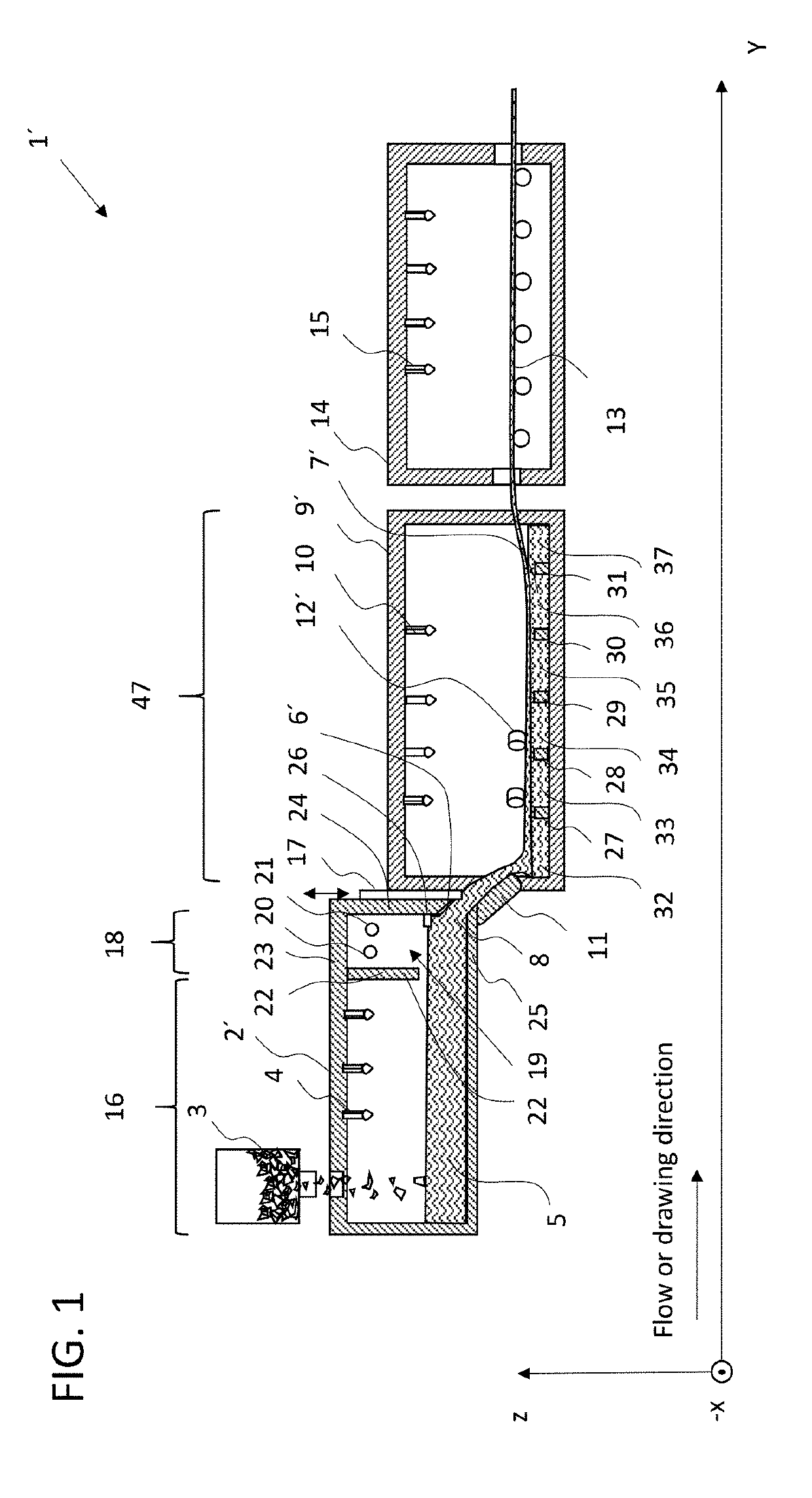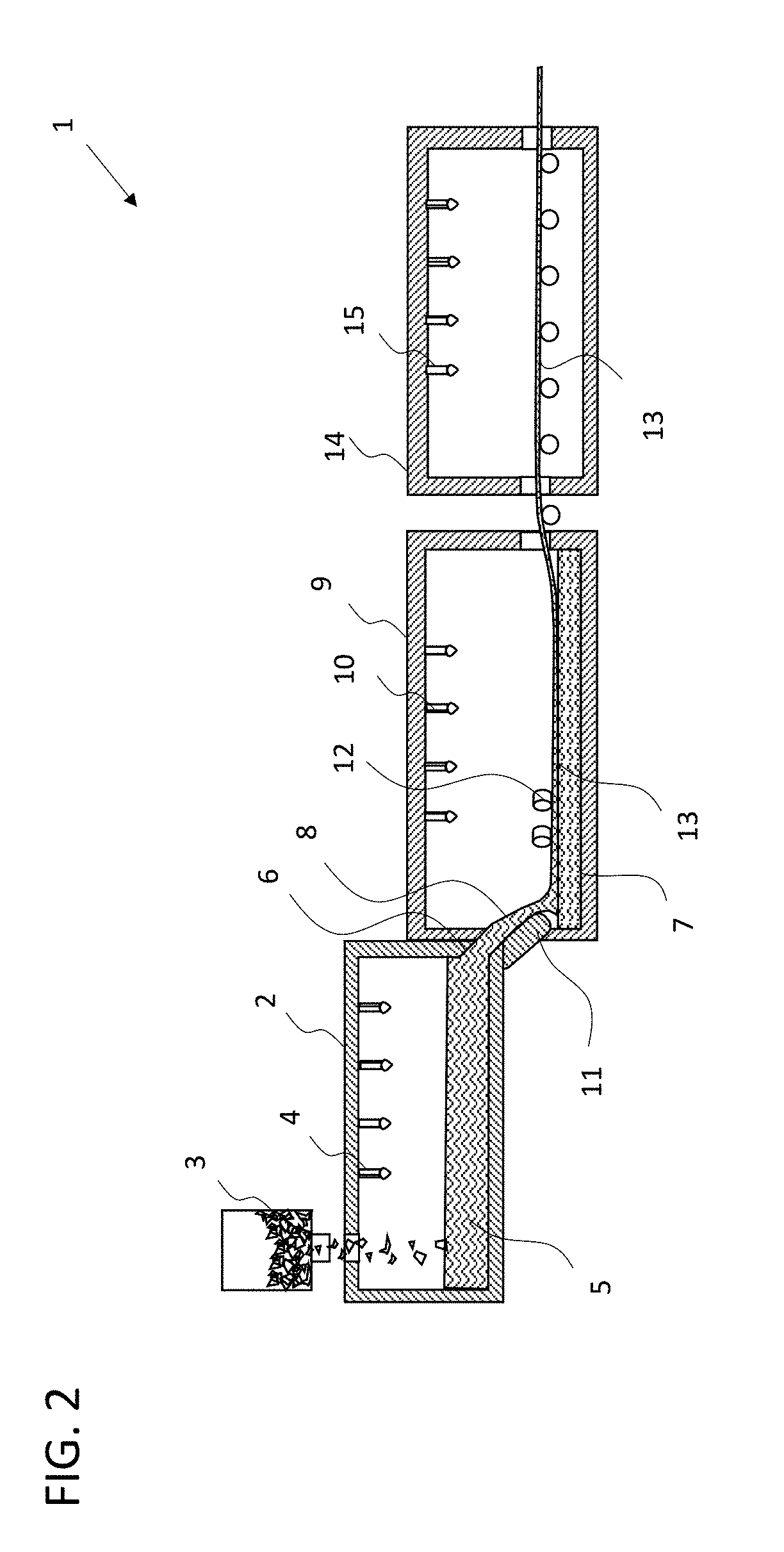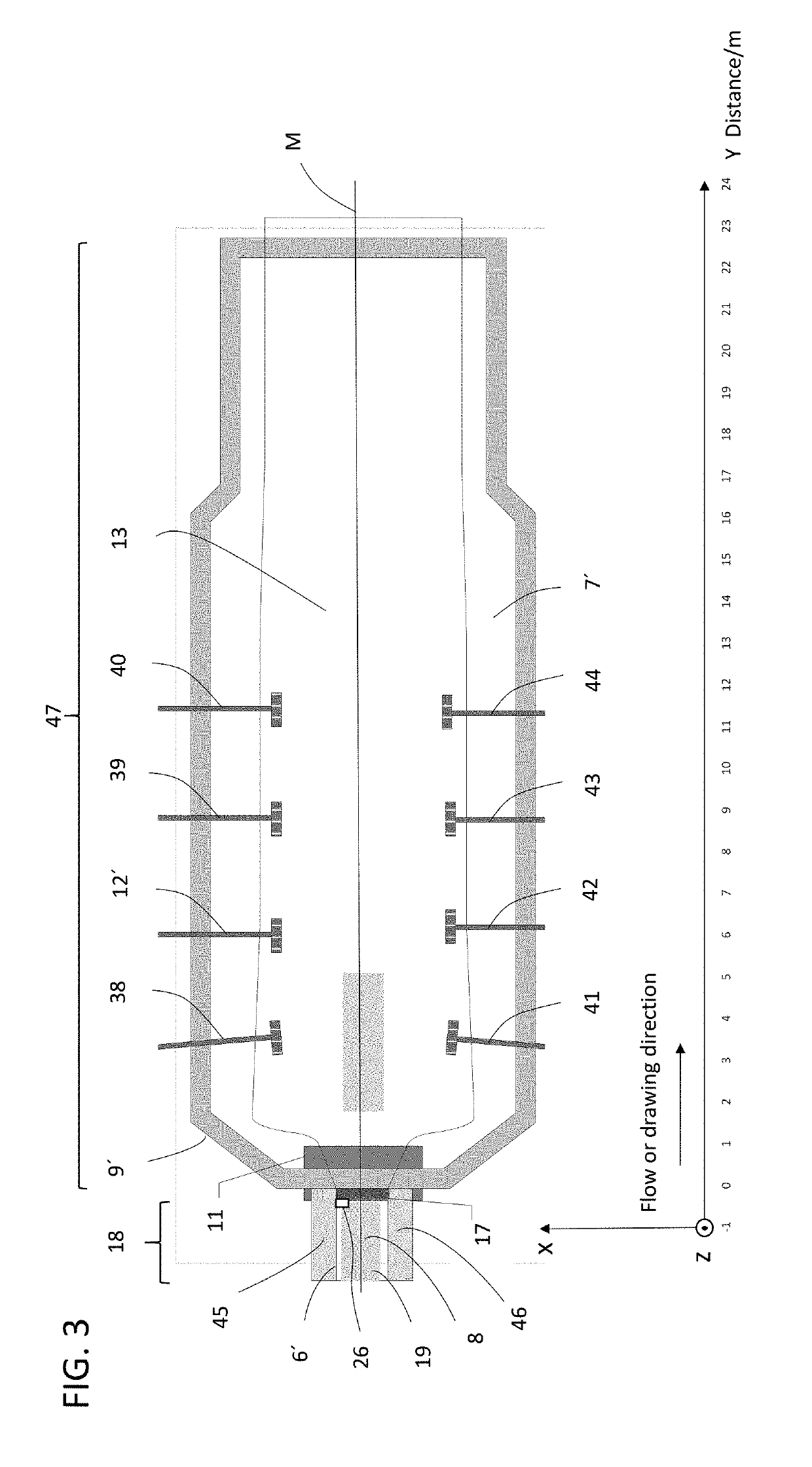Thin glass substrate, method and apparatus for its production
- Summary
- Abstract
- Description
- Claims
- Application Information
AI Technical Summary
Benefits of technology
Problems solved by technology
Method used
Image
Examples
Embodiment Construction
[0084]In the following description of preferred and particularly preferred embodiments, the same reference numerals in the various figures designate the same or equivalent components of the respective apparatus disclosed herein.
[0085]Referring first to the prior art system for producing float glass as shown in FIG. 2, which is overall designated by reference numeral 1, similar to the apparatus according to the invention.
[0086]This float system comprises a melting furnace 2, also referred to as a melting tank, to which a glass batch 3 to be melted is fed in known manner and is heated by burners 4 until a glass melt 5 of the desired composition is obtained. Further devices for homogenization of the molten glass will be known to a person skilled in the art and are therefore not described in more detail.
[0087]Through a channel 6, the molten glass of glass melt 5 reaches a float bath 7, usually under the influence of gravity, which float bath comprises liquid tin on which the glass 8 to ...
PUM
| Property | Measurement | Unit |
|---|---|---|
| Temperature | aaaaa | aaaaa |
| Temperature | aaaaa | aaaaa |
| Temperature | aaaaa | aaaaa |
Abstract
Description
Claims
Application Information
 Login to View More
Login to View More - R&D
- Intellectual Property
- Life Sciences
- Materials
- Tech Scout
- Unparalleled Data Quality
- Higher Quality Content
- 60% Fewer Hallucinations
Browse by: Latest US Patents, China's latest patents, Technical Efficacy Thesaurus, Application Domain, Technology Topic, Popular Technical Reports.
© 2025 PatSnap. All rights reserved.Legal|Privacy policy|Modern Slavery Act Transparency Statement|Sitemap|About US| Contact US: help@patsnap.com



